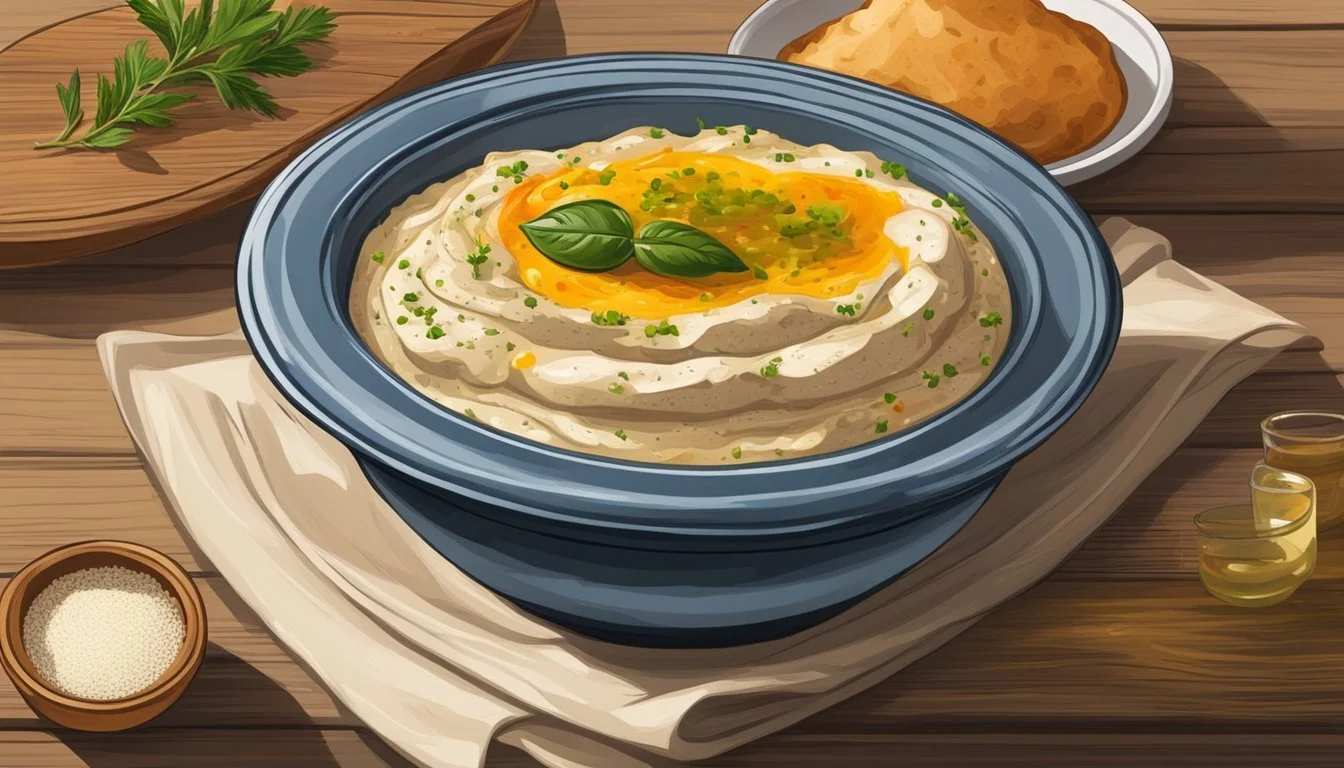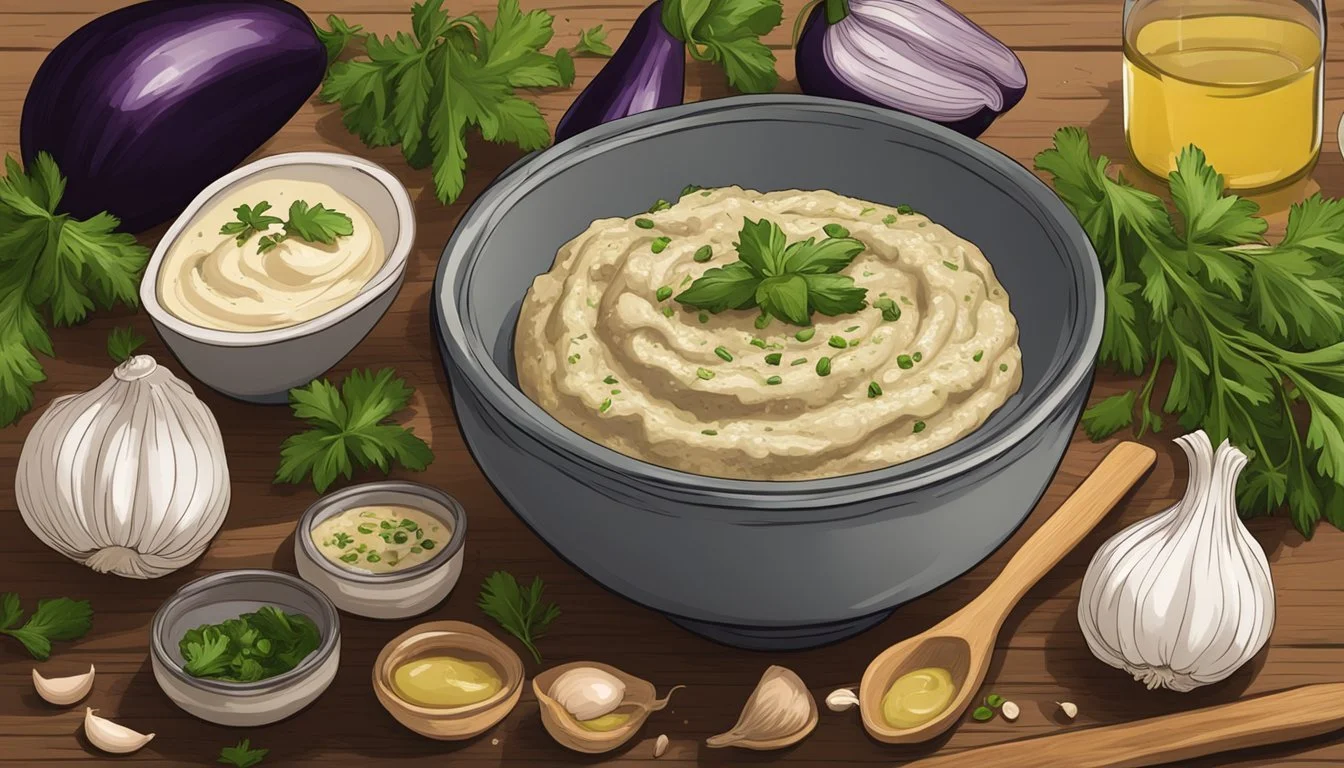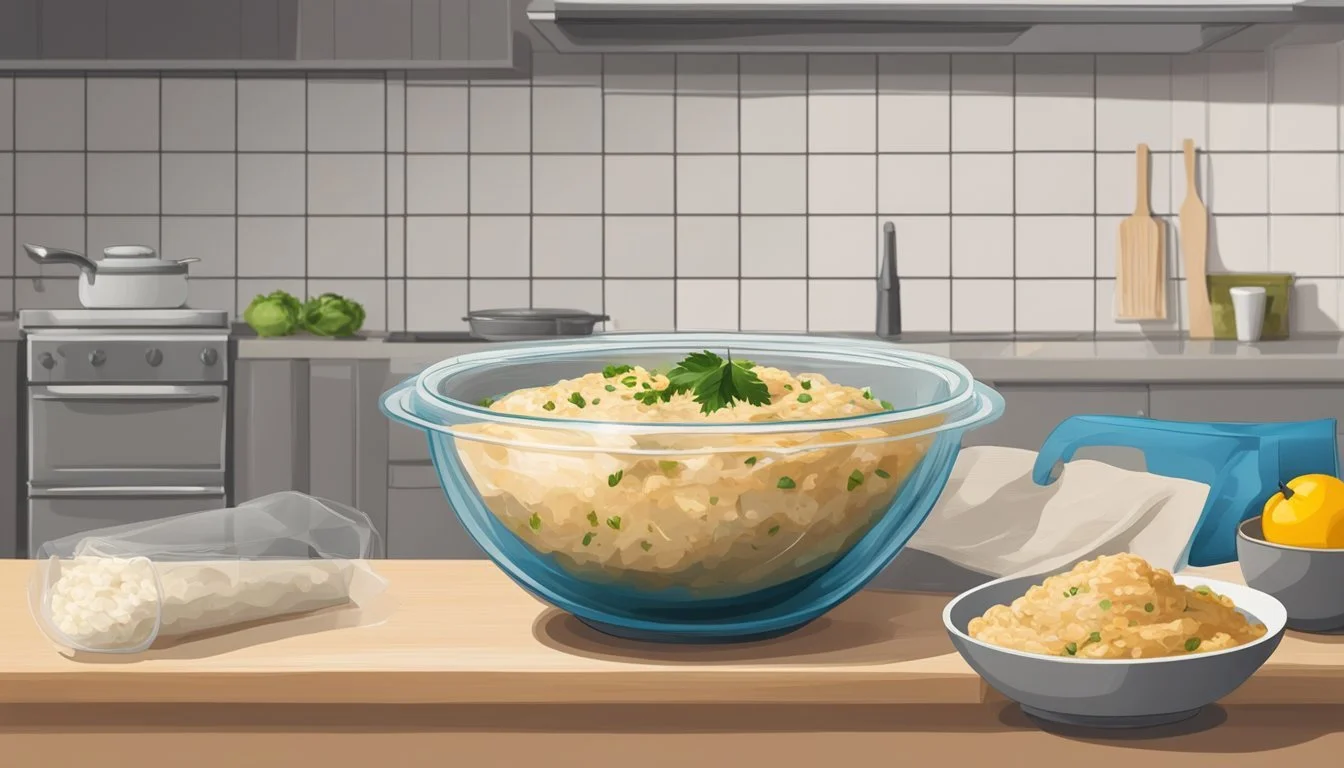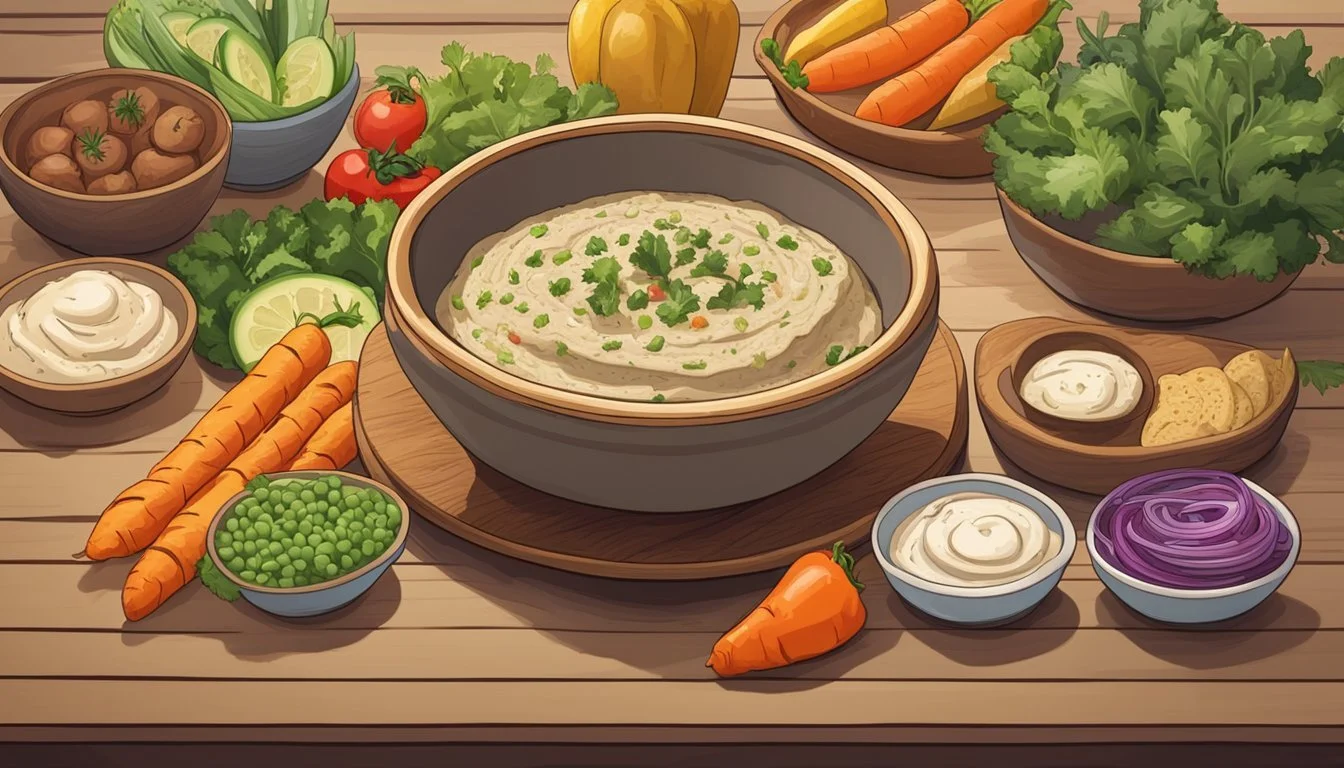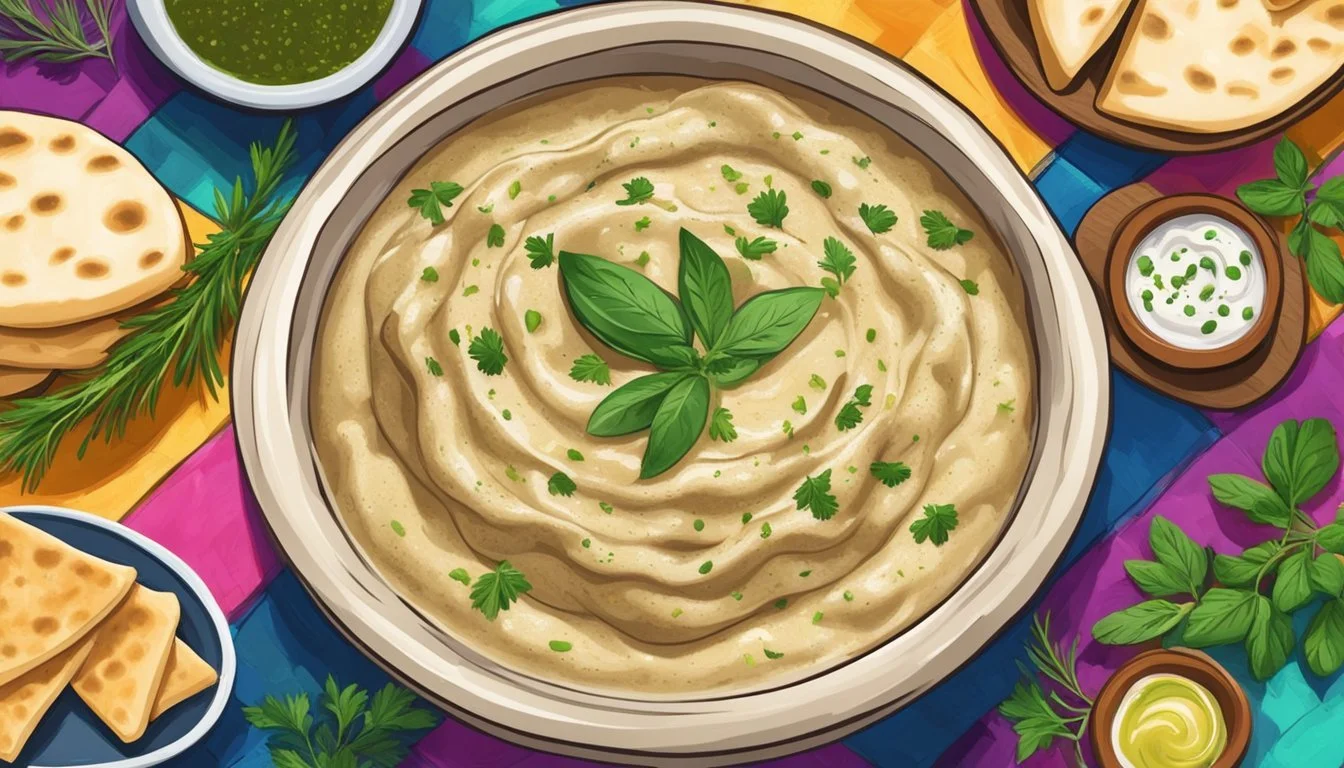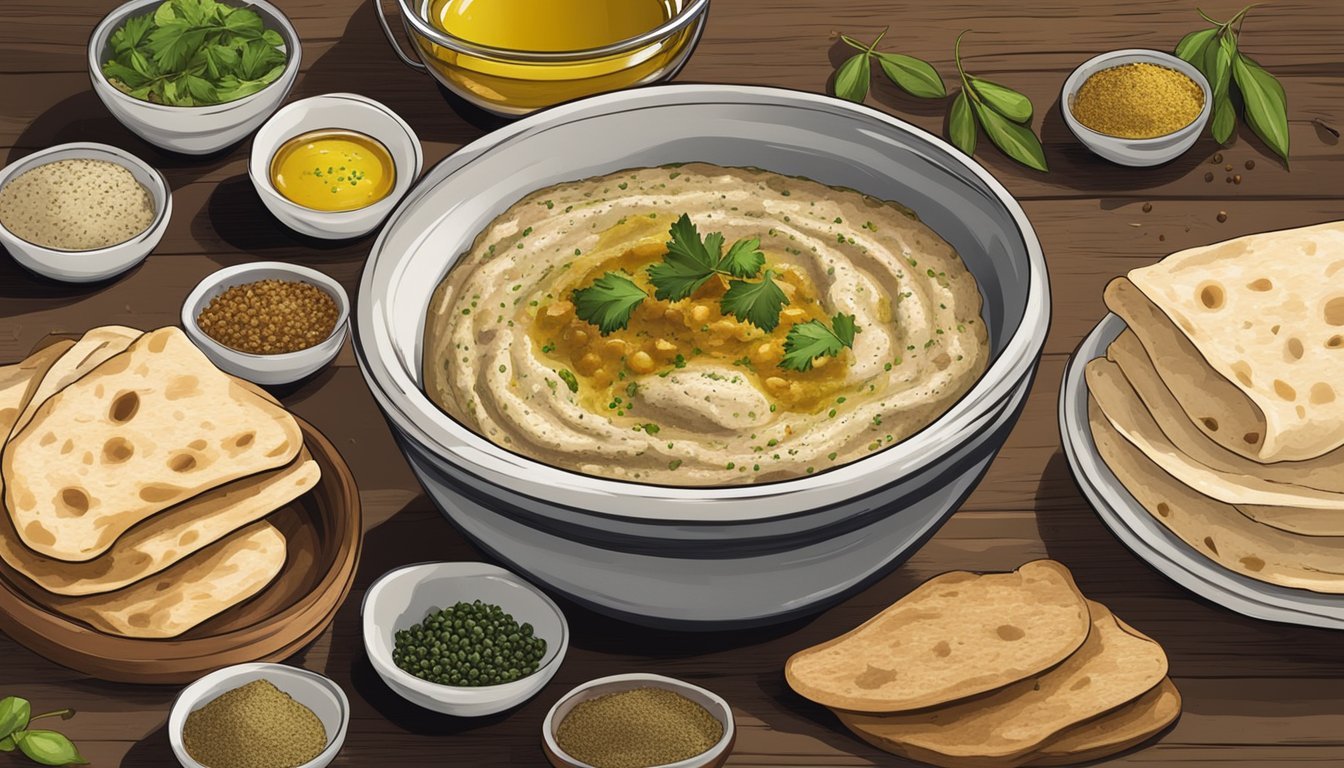How Long Does Freshly Prepared Baba Ganoush Last?
Shelf Life & Storage Tips
Baba ganoush, a Levantine appetizer, is a delight for the palate, combining the smokiness of charred eggplant (What wine goes well with eggplant?)with the nuttiness of tahini, and brightened by lemon juice. It is often enjoyed with a drizzle of olive oil and various seasonings such as garlic, salt, and herbs to enhance its flavor profile. With its creamy texture and rich taste, baba ganoush has secured its place as a favorite dip alongside hummus and tzatziki in Mediterranean cuisine.
When it comes to storing this freshly prepared dip, the shelf life of baba ganoush is a common question for both culinary professionals and home cooks. Proper storage is key to maintaining its freshness and flavor. Generally, when kept in an airtight container in the refrigerator, baba ganoush remains suitable for consumption for approximately 3-5 days. Beyond this period, it may begin to lose its characteristic texture and taste.
Temperature plays a critical role in preserving the integrity of baba ganoush. Ensuring it is promptly refrigerated after serving is essential. Even when properly stored, it is advisable to check for any signs of spoilage, such as an off smell or visible mold, before consuming. As with many perishable food items, when in doubt, it's best to err on the side of caution and dispose of any dip that does not seem fresh.
Understanding Baba Ganoush
Baba Ganoush is a culinary staple in Middle Eastern cuisine, revered for its creamy texture and smoky flavor. As a vegan-friendly dip, it blends healthfulness with tradition, making it a popular appetizer across various cultures.
Definition and Origin
Baba Ganoush, sometimes spelled as "baba ghanoush," is a Levantine appetizer traditionally made from roasted eggplants (What wine goes well with eggplant?), mashed and mixed with ingredients like tahini (sesame paste), lemon juice, garlic, and olive oil. It often includes herbs and spices such as salt, pepper, and sometimes sumac or Aleppo pepper for added flavor. The dish has its origins in the Middle East and is a staple in Mediterranean diets, celebrated for its smoky taste and healthy properties. Often served with pita bread or vegetables, Baba Ganoush is a vegan dish that serves as a flavorful spread or dip.
Comparison with Hummus
While Baba Ganoush and Hummus are both popular Middle Eastern dips and are commonly enjoyed in the same contexts—such as part of a Mediterranean mezze platter—there are distinct differences between the two:
Main Ingredient: Baba Ganoush is eggplant-based, while Hummus is made primarily from chickpeas.
Texture and Flavor: Baba Ganoush typically has a smoother and creamier texture with a smoky undertone due to the roasting of eggplants. Hummus, on the other hand, has a nuttier flavor from the chickpeas and tahini.
Nutritional Content: Both dips are generally considered healthy, however, Hummus contains more protein due to the chickpeas, while Baba Ganoush can be lower in calories due to the primary use of eggplant.
Each dip has its own unique recipe and taste, making them both cherished as separate entities in Middle Eastern and Mediterranean cuisines, and both are often presented as a vegan option on the appetizer menu.
Ingredients
In baba ganoush preparation, selecting high-quality ingredients ensures the freshness and flavor of the dish. Properly proportioned ingredients impact both taste and shelf life.
Core Components
Eggplant: The star of the dish, typically large, deep-purple varieties are roasted until tender.
Tahini: A paste made from ground sesame seeds, essential for its rich, nutty flavor.
Lemon Juice: Adds freshness and acidity, balancing the smokiness of the eggplant.
Garlic: A few cloves bring a sharp, aromatic depth to the spread.
Olive Oil: Preferably extra-virgin, it enriches the baba ganoush with a fruity, peppery essence.
Salt: Fine table salt works well to enhance the overall flavors of the baba ganoush.
When these core components are sourced and measured carefully, they form the foundation of a delectable baba ganoush.
Spices and Flavoring
Cumin: Ground cumin offers warm and earthy undertones.
Pepper: Black pepper can be freshly ground to contribute a mild heat and zest.
Parsley: Fresh parsley, finely chopped, introduces a vibrant color and a clean, slightly bitter taste.
Yogurt (optional): Some chefs add a small amount of Greek yogurt for a creamy texture and tang.
Incorporating these spices and optional yogurt can transform the baba ganoush into a flavorful, well-rounded spread, complementing the core ingredients.
Preparation Techniques
Freshly prepared baba ganoush varies in taste and longevity based on its preparation methods. The two critical stages that largely influence the flavor and shelf-life are the roasting of the eggplant and the subsequent blending process.
Roasting Process
The roasting process is integral for developing the smoky flavor characteristic of authentic baba ganoush. Eggplants should be roasted until the skin becomes charred and the interior is soft. Using an oven or a grill can impact this stage drastically:
Oven: Preheat the oven to a high temperature, commonly between 400-450 degrees Fahrenheit, and roast whole eggplants that have been pierced to allow steam to escape. Turning the eggplants occasionally ensures even roasting. The process typically takes 45-60 minutes.
Grill: Grilling eggplants over an open flame imparts a more intense smoky flavor. The eggplants are turned frequently until the skin is blistered and the flesh yields easily to pressure.
After roasting, it is important to let the eggplants cool and then remove the skin. This not only improves texture but also eliminates any potential bitterness.
Blending for Texture
Achieving the perfect creamy texture of baba ganoush requires a careful blending process:
Food Processor: Pulse the roasted eggplant with ingredients like tahini, garlic, and lemon juice until the mixture is creamy and smooth. Adjusting blending time can tweak the texture from chunky to silky.
Blender: For an ultra-smooth texture, a high-powered blender can be used, but one must be cautious not to overblend, as the mixture can become heavy and lose its characteristic texture.
Whether one opts for a texture that's rustic and chunky or smooth and creamy, it's important to blend just enough to integrate the flavors without compromising the light, airy consistency of the prepared dip.
Preservation Methods
To ensure the longevity and safety of freshly prepared baba ganoush, proper preservation methods are essential. Employing the right storage techniques will maximize both shelf life and freshness.
Ideal Storage Conditions
Baba ganoush should be stored in the fridge immediately after preparation. The ideal storage conditions involve:
Temperature: It should be kept in a refrigerator at a consistent 40°F (4°C) or below.
Container: An airtight container is imperative to prevent contamination and the absorption of other food odors.
Shelf Life and Freshness
Consumption Window: Generally, baba ganoush maintains its quality for 3-5 days when refrigerated properly.
Indicators of Spoilage: Spoilage can be identified by off-odors, a change in color, or the presence of mold. If these signs are evident, the baba ganoush should not be consumed.
Freezing Option
Feasibility: Freezing is a viable option to extend the shelf life of baba ganoush beyond the typical refrigerator span. When frozen, it can last for up to 3 months.
Method: Store in freezer-safe containers or bags, making sure to expel as much air as possible to prevent freezer burn. Thaw in the fridge overnight before use.
Serving Suggestions
When showcasing the versatility of baba ganoush, it's important to present it in ways that enhance its flavor profile. Whether it's serving as the centerpiece of a snack platter or as a garnish to a main dish, how one serves baba ganoush can significantly impact the overall dining experience.
Dipping and Pairings
The rich, smoky taste of baba ganoush pairs exceptionally well with a variety of dippables. For a classic approach, pita bread and pita chips offer a delightful crunch and are sturdy enough to scoop up generous amounts of this eggplant spread. For a healthier twist, an assortment of veggies such as carrot sticks, cucumber slices, and bell pepper strips can be offered as dipping options. Not only are they crisp and refreshing, but they also complement the creamy texture of baba ganoush. Additionally, incorporating other dips like tzatziki or muhammara can create a Mediterranean-inspired appetizer spread that's both flavorful and satisfying.
Pita Bread: Warmed or toasted, perfect for scooping
Veggies: Carrot, cucumber, and bell peppers for a fresh bite
Pita Chips: Crunchy alternative to bread
Other Dips: Pair with tzatziki or muhammara for variety
Garnishes and Toppings
To elevate the presentation of baba ganoush, one can adorn it with thoughtful garnishes and toppings. A drizzle of extra virgin olive oil adds a rich, fruity dimension and a glossy finish. For a bit of texture, a sprinkling of toasted pine nuts or sesame seeds can be added right before serving. Fresh herbs, like parsley or mint, contribute brightness and a pop of color. As a sandwich spread, baba ganoush brings a creamy, smoky element that complements grilled meats and fresh vegetables.
Extra Virgin Olive Oil: A drizzle for richness and shine
Toasted Pine Nuts/Sesame Seeds: For crunch and nuttiness
Fresh Herbs: Parsley or mint for a fresh burst of flavor
Sandwich Spread: Upscale the usual fare with a smoky twist
Health and Nutrition
Baba ganoush is a Middle Eastern eggplant dip that not only offers a savory flavor but also contributes valuable nutrients and potential health benefits. It's a dish that can contribute positively to a balanced diet.
Caloric and Nutrient Content
Baba ganoush primarily consists of eggplant, which serves as a low-calorie base with approximately 35 calories per 100 grams. The addition of ingredients like tahini, olive oil, and various seasonings contributes additional calories but also essential nutrients. A typical serving of baba ganoush contains:
Calories: Around 80-100 calories per 1/4 cup serving
Protein: Approximately 2 grams; a modest contributor to daily protein intake
Fiber: Around 3 grams; beneficial for digestive health
Fat: Mostly monounsaturated and polyunsaturated fats from tahini and olive oil
Dietary Benefits
The components of baba ganoush collectively offer several dietary benefits:
Healthy Fats: The tahini (sesame seed paste) and olive oil provide heart-healthy fats that are important for proper bodily function.
Fiber: The fiber content from the eggplant aids in maintaining gut health and can support cholesterol management.
Vitamins and Minerals: Baba ganoush supplies essential vitamins such as vitamin C, as well as minerals like potassium and iron. These nutrients contribute to the overall nutritious profile of the dip.
Vegan-Friendly: It's typically a plant-based and vegan option suitable for those following such dietary restrictions.
The dip, when enjoyed as part of a balanced diet, can be a healthy and nutritious addition that provides essential nutrients while also being a flavorful and satisfying choice.
Cultural Significance
Baba Ganoush is an iconic Middle Eastern dip that's interwoven with the region’s culinary traditions and has seen a surge in global popularity.
Role in Middle Eastern Cuisine
In the labyrinthine alleys of Middle Eastern markets, Baba Ganoush holds its place as a quintessential component of the mezze platter. Originating from Lebanon, this eggplant-based dip exemplifies the rich flavors of Arabic gastronomy. Customarily, it graces the tables at gatherings and parties, signifying hospitality and communal dining. Its texture and preparation methods vary across the Mediterranean region, yet it perennially remains a celebrated fixture in social feasts and everyday meals alike.
Global Popularity
Baba Ganoush has transcended its Middle Eastern roots to attain a venerable status in the world food scene. As international palates become more adventurous, the dip's smoky, creamy profile has captivated food enthusiasts far beyond its native lands. It's a common sight on restaurant menus worldwide, often featured alongside dishes like hummus, reinforcing its standing in global Middle Eastern cuisine. The dip's versatility and healthful attributes have also contributed to its international acclaim, making it a beloved choice for vegetarians and those seeking nutritious options.
Recipes and Variations
Baba Ganoush, the smoky eggplant dip, embodies the essence of Mediterranean cuisine. Here, explore its classic preparation along with regional variations that offer delightful twists on the traditional recipe.
Classic Baba Ganoush
The authentic Baba Ganoush recipe is a staple in Lebanese mezze and is revered for its creamy, smoky flavor profile. The base ingredients include:
Eggplant: Charred over an open flame or roasted in the oven until tender.
Tahini: A paste made from sesame seeds, providing a nutty richness.
Garlic: Adds a piquant depth to the dish.
Lemon Juice: Provides a refreshing zest and cuts through the richness.
Seasonings: Commonly salt and pepper, possibly accentuated with sumac for a tart edge.
These core components are blended until reaching the desired smoothness, with the option of stirring in Greek yogurt to enhance creaminess.
Regional Twists
Across the Mediterranean, chefs put their own spin on the traditional Baba Ganoush recipe:
Tzatziki-Influenced Baba Ganoush: Borrowing from Greek tzatziki, some variations might include cucumber and dill, offering a cooler, herbaceous take on the classic.
Muhammara-Inspired Baba Ganoush: For those seeking a bit of heat, ingredients such as Aleppo pepper or roasted red pepper from the muhammara recipe can be incorporated to give the dish a spicy complexity.
Regional recipes may also alter the texture or include additional herbs and spices, fostering a rich diversity within the framework of the original dish. Each variation presents an opportunity to savor the multifaceted flavors of Middle Eastern and Mediterranean cuisine.
Tips and Tricks
To ensure that your baba ganoush remains a flavorful and enjoyable appetizer, attention to flavor development and the resolution of common issues is essential. These practical tips are aimed to help you maintain the dish's integrity from preparation to storage.
Achieving the Perfect Flavor
Crafting baba ganoush with a well-balanced and complex taste profile hinges on several factors. The texture should be creamy, which can be achieved by thoroughly incorporating tahini and possibly a bit of Greek yogurt. For the desired smoky flavor, one can char the eggplant skin over an open flame or roast it until deeply colored. The inclusion of seasoning and spices is crucial, with smoked paprika or regular paprika offering a subtle depth, while a pinch of cayenne pepper can provide a mild heat.
Season Gradually: To prevent over-salting, add salt incrementally and taste frequently.
Spice Considerately: A small amount of spices can go a long way; begin with less and adjust according to preference.
Troubleshooting Common Issues
A myriad of potential issues can arise when preparing baba ganoush, but they can often be easily rectified with a few adjustments.
Avoiding Bitterness: If the baba ganoush tastes bitter, one can balance it by adding a touch more lemon juice or a hint of sugar.
Texture Problems: If the texture is too watery, extra tahini or draining the eggplant flesh can achieve the desired consistency.
Handling these aspects with care will help in preserving the authentic flavors of baba ganoush and increase its longevity when stored properly.
Frequently Asked Questions
When it comes to enjoying baba ganoush, understanding its shelf life and exploring ingredient substitutions are crucial to both maintaining the quality of the dish and tailoring it to personal preferences or dietary restrictions.
Shelf Life Queries
How long does baba ganoush last in the fridge?
Freshly prepared baba ganoush can last in the refrigerator for up to 3-5 days when stored in an airtight container.
What are the signs that baba ganoush has gone bad?
Indicators include an off-smell, a noticeable change in texture, or the presence of mold. It's important to discard the dip if any of these signs are evident.
Ingredient Substitutions
Can one substitute ingredients in baba ganoush without compromising its quality?
Yes, certain substitutions can be made. For instance, Greek yogurt can be used to add creaminess, or different spices can replace traditional seasonings for a unique twist.
Tahini replacement: For those with sesame allergies, alternatives like sunflower seed butter or even almond butter can provide a similar texture.
Lemon juice adjustment: If lemon juice is not available or desired, vinegar can serve as an acidic substitute, albeit with a different flavor profile.

